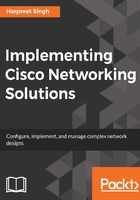
Security
Networks are built to be used, not abused. However, there are instances where the networks are put to malicious use, either knowingly or unknowingly. Malicious use could be a sudden burst of traffic on the network causing congestion and degrading the experience for users, directing traffic towards a critical server to overwhelm the server resources and hence make it unavailable, taking control of network nodes/devices to manipulate routing or snoop data sending traffic to spread virus/worms or other malicious code, and so on. If the network is not secured properly, the network is not reliable and cannot be entrusted by users to transport data with confidence.
A secure network means that the data can be sent from source to destination through the network with the performance benchmarks that have been set for the network without the data being spoofed, copied, altered, or rerouted through unnecessary hops, or unauthorized data being injected on the network.
With the fast evolution of ransomware, advanced persistent threat (APT) attacks and changes in network and security architectures, network security has become increasingly complex yet vital to protecting the business, with no room for compromise. Network security is a big topic in itself and comprises data plane security, control plane security, and management plane security. We will cover these aspects in the chapter on Network Security.